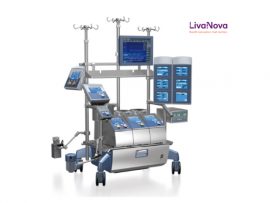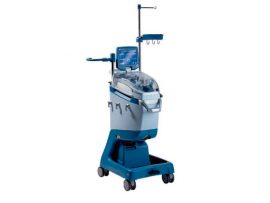Abstract Background Mortality after congenital heart surgery is an important metric across benchmarking, quality, and reporting initiatives. All rely on estimates from prior years, and how well these reflect current..
Read MoreAbstract Background Albumin continues to be used routinely by cardiac anaesthesiologists perioperatively despite lack of evidence for improved outcomes. The Multicenter Perioperative Outcomes Group (MPOG) data ranked our institution as one..
Read MoreAbstract Introduction Along with cardiopulmonary bypass time, aortic cross-clamping time is directly related to the risk of complications after heart surgery. The influence of the time difference between cardiopulmonary bypass..
Read MoreAbstract Background: mRNA vaccines against severe acute respiratory syndrome coronavirus 2 (SARS-CoV-2) became common. We investigated the optimal timing for inoculation against SARS-COV-2 in the candidates for cardiac surgery under..
Read MoreAbstract Background Up to 42% of patients develop acute kidney injury (AKI) after cardiac surgery. The aim of this study was to describe the relationship between preoperative microcirculatory function and..
Read MoreAbstract BACKGROUND: Platelet transfusion is common in cardiac surgery, but some studies have suggested an association with harm. Accordingly, we investigated the association of perioperative platelet transfusion with morbidity and..
Read MoreAbstract Objective This study aimed to determine the maximum safe dose of intranasal insulin administration during cardiac surgery. Methods This open-label, Phase 1, single-center, dose-escalation clinical trial recruited patients scheduled..
Read MoreAbstract Since the risk factors for heparin resistance (HR) before cardiopulmonary bypass (CPB) have not been fully clarified, this study investigated the contributing factors for HR after the initial unfractionated..
Read MoreAbstract Objective: We aimed to evaluate the effects of cardiopulmonary bypass (CPB) machines used in coronary artery bypass grafting surgeries on cerebral perfusion by performing cerebral oximetry monitoring [near-infrared..
Read MoreAbstract It is believed that a lower temperature setting of hypothermic circulatory arrest (HCA) in thoracic aortic surgery causes coagulopathy, resulting in excessive bleeding. However, experimental studies that eliminate clinical..
Read MoreThis enlightening online event is strategically designed for hospital executives and stakeholders facing the financial intricacies of the post-pandemic landscape. , the strategic advisor to IEC, will lead the discussion..
Read MoreAbstract In rural settings worldwide, many people live in effective blood deserts without access to any blood transfusion. The traditional system of blood banking is logistically complex and expensive for..
Read MoreAbstract Purpose of review The worldwide leading cause of maternal death is severe maternal hemorrhage. Maternal hemorrhage can be profound leading to an entire loss of blood volume. In the..
Read MoreIntroduction For centuries, the field of medicine has centred its attention on the function of end organs. The shift in perception that recognizes the ‘aorta as an organ’ in its..
Read MoreDescripción Agenda: • Fundamentos sobre la terapia de hemoadsorción Dra. Maria Taborda-Küpper – Alemania Gerente Médico Hígado y Riñon, CytoSorbents • Uso de Cytosorb en el Cuidado Crítico Pediatrico..
Read MoreAbstract Background The site of arterial cannulation is an important consideration in the prevention of cerebral infarction after total arch replacement. We compared the outcomes of cannulation of the bilateral..
Read MoreAbstract Venovenous bypass (VVB) is a technique used in liver transplantation (LT) to maintain hemodynamic stability and abdominal organ perfusion and thereby improve patient outcomes. Despite its perceived benefits, VVB..
Read MoreKelli Shaw, 34, believes in happy endings. On June 9, 2024, the Bedford, New Hampshire mother of three celebrated her 10-year wedding anniversary with a vow renewal ceremony. It is..
Read MoreAbstract Aims To evaluate the feasibility of a transthoracic echocardiogram using an apical‑subcostal protocol in invasive mechanical ventilation (IMV) and prone position. Methods Prospective study of adults who required a..
Read MoreAbstract Introduction Mortality rates in cardiogenic shock remain high, especially in patients with SCAI shock stages C to E [1].When hemodynamic status does not improve or worsens despite optimal fluid,..
Read MoreAbstract The development of new right ventricular (RV) dysfunction after cannulation to venovenous (VV) extracorporeal membrane oxygenation (ECMO) and its association with worse outcomes is increasingly recognized in adult patients,..
Read MoreIntroduction Extracorporeal membrane oxygenation (ECMO) is a means of supporting the heart, lungs, or both when more conventional therapy fails to achieve appropriate physiologic endpoints. The majority of ECMO..
Read MoreAbstract Bleeding and thrombotic complications are major drivers in extracorporeal life support (ECLS) patients’ negative outcomes and are reported in up to 40% of the ECLS-runs [1, 2]. Consumptive coagulopathy..
Read MorePrise en charge de l'arrêt cardiaque avec recours à l'assistance circulatoire - M. Pozzi
Read MoreAbstract Purpose of review This article offers an overview of recent randomized controlled trials (RCTs) testing the efficacy of veno-arterial extracorporeal membrane oxygenation (VA ECMO) and microaxial flow pump (mAFP)..
Read MoreAbstract This case report explores the successful use of the Impella 5.5 (Abiomed Inc., Danvers, MA) device in a 22 kg, 0.89 body surface area (BSA) pediatric patient with longstanding dilated..
Read MoreAbstract Background: Hemolysis is a frequent complication in patients with sepsis, ARDS, or extracorporeal membrane oxygenation (ECMO). Haptoglobin (Hp) can scavenge released cell-free hemoglobin (CFH). Hemolysis and low plasma concentrations of..
Read MoreAbstract This review highlights advancements in extracorporeal life support (ECLS), emphasizing the critical role of standardized terminology, particularly for extracorporeal membrane oxygenation (ECMO) in treating right ventricular and respiratory failure...
Read MoreAbstract Use of extracorporeal membrane oxygenation (ECMO) for cardiorespiratory failure remains complicated by blood clot formation (thrombosis), triggered by biomaterial surfaces and flow conditions. Thrombosis may result in ECMO circuit..
Read MoreAbstract In unfractionated heparin (UFH) monitoring during extracorporeal circulation, the traditional measures of activated clotting time (ACT) or activated partial thromboplastin time (APTT) may diverge, confounding anticoagulant adjustments. We aimed..
Read More
























